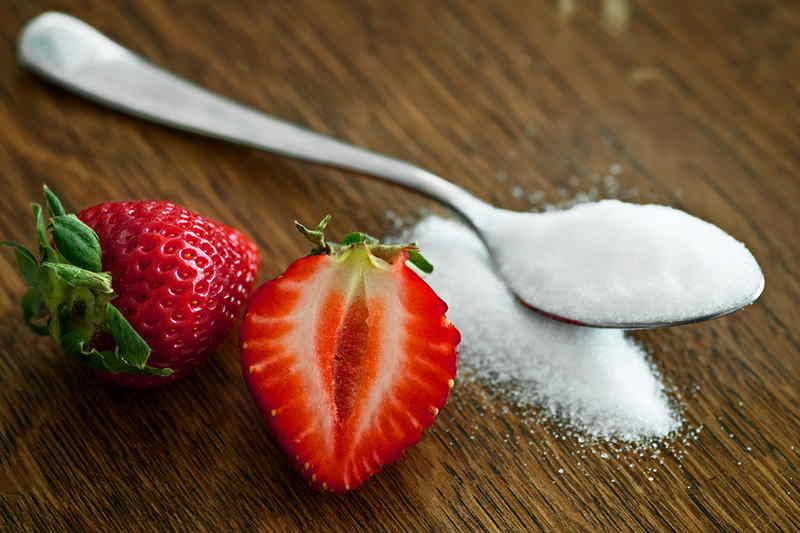
Fructose and sucrose are often mistaken for one another due to the similarities between sucrose and high fructose corn syrup. Some of the confusion also stems from the fact that they are both called, “sugar.”
The differences between these two start on the molecular level. There are many disparities between fructose and sucrose. They play out when food containing either of these sugars is ingested, and the body begins processing those molecules.
Most of the research on the negative effects of both fructose and sucrose should be approached with caution. Researchers used pure fructose and sucrose at levels far above the amount that occurs in the normal population’s diet.
Fructose
Like glucose, fructose is a monosaccharide and is considered a simple sugar. It is often referred to as the “fruit sugar” because fructose occurs naturally in fruits and vegetables. The body also takes a longer time to digest naturally occurring fructose because fruits and vegetables also contain fiber and other phytoproteins. Due to this unhurried digestion, insulin is not released as these foods are broken down. When there is a higher level of insulin, the human body will start storing fat in the liver and also dramatically increase one’s appetite.
Fructose has been used as a sweetener since the mid-1800s and is actually the most water-soluble sugar of them all. It is also can be around twice as sweet as sucrose, so it takes a lot less to get the same desired sweetness. Granulated fructose sweetener can be purchased in any supermarket.
Fructose and high fructose corn syrup should never be used interchangeably. High fructose corn syrup is molecularly more consistent with sucrose than fructose. It is made up of glucose and fructose but in different quantities.
Sucrose
Sucrose is also a simple sugar. However, it is considered a disaccharide because it is composed of two monosaccharide molecules, glucose, and fructose. Both sucrose and fructose are carbohydrates. The form of sucrose that one might interact with on a daily basis is ordinary table sugar. It is also found naturally in plants like sugar cane, corn, and sugar beets, among others.
Sucrose has been used for many years as a means of preserving food. It has also become the biggest added sugar in American foods and occurs way more in the average human diet than fructose.
The reason that the consumption of sucrose can contribute to the production of fat is because of a molecule called sucrase. Sucrase lines the small intestine and breaks sucrose down into fructose and glucose. Glucose stimulates insulin production, which contributes to fat in the liver and increased appetite.
Conclusion
Once again, it is important to note that articles citing studies of fructose’s link to metabolic syndrome, which increases the risk for both diabetes and cardiovascular disease are not entirely accurate. The studies based on this information used pure fructose. Pure fructose occurs in minute doses in the human diet.
Completely eliminating sucrose or fructose from one’s diet does not eliminate the possibility of gaining fat. Obesity and diabetes cannot be caused solely by one food or ingredient. It is a combination of many factors, including how active or an inactive a person is.
SHARE if you learned something new!
Check Also This Related Posts:
• 11 Healthiest Fast Food options: What To Eat When You’re On the Go

